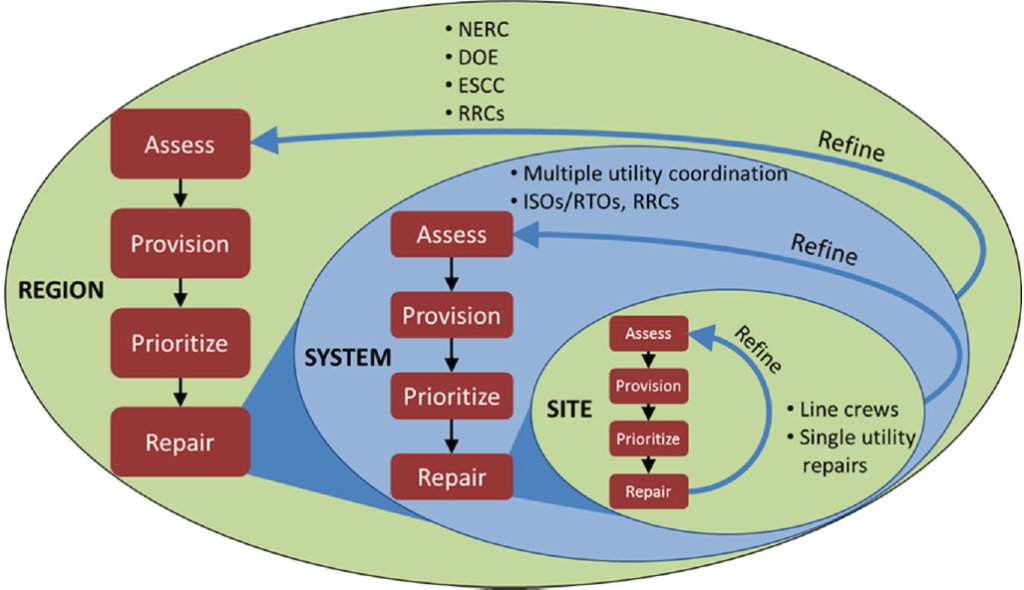
The Sri Lanka Electricity Board’s System Control Room, also known as the System Control Centre, is responsible for monitoring and managing all power plants above 10 megawatts and the high-voltage electricity transmission system of 132 and 220 kilovolts across the country. Since electricity demand fluctuates throughout the day, it is managed as a real-time system where demand and supply must remain balanced to prevent system failures.
How the Electricity System Works
To ensure stability, power plants adjust their output to match the fluctuating demand. The key challenge is monitoring whether supply and demand are properly aligned.
There are two types of electricity:
- Direct Current (DC)
- Alternating Current (AC)

Sri Lanka’s electricity system operates on AC power, which oscillates at a frequency of 50 cycles per second (50 Hz). If supply and demand are balanced, the frequency remains steady at 50 Hz. However:
- If the frequency drops below 50 Hz, it indicates that supply is insufficient to meet demand.
- If the frequency rises above 50 Hz, it means supply exceeds demand.
The System Control Centre constantly monitors these fluctuations and ensures the frequency is maintained between 49.5 and 50.5 Hz, in line with Sri Lankan standards.
How Power Supply is Regulated
Electricity supply is controlled through two methods:
- Short-Term Adjustments – This involves real-time regulation of electricity production.
- Long-Term Planning – This includes forecasting and coordinating with multiple power plants to meet demand spikes, such as those occurring in the evening when people turn on lights and appliances.

For instance, if the expected daytime demand is 1,000 megawatts, it may fluctuate between 950 and 1,050 megawatts based on real-time consumption. The System Control Centre ensures that 900 megawatts are supplied consistently from various power plants, while one power plant, known as the Frequency Controlling Machine, adjusts its output dynamically to balance the system.
In the evening, when demand surges rapidly, the System Control Centre coordinates with power plants to increase their supply accordingly. If there is a gap between supply and demand, the Frequency Controlling Machine automatically adjusts its output to stabilize the system.
What Happened During the Power Outage?
The power outage on this occasion was caused by an imbalance in the main operating system, leading to a complete system failure.
According to initial reports, the primary cause was a monkey coming into contact with a transformer in the Panadura area, triggering a massive supply failure. This sudden loss of power created an imbalance that the system could not recover from quickly enough.
When such a large drop in supply occurs, there isn’t enough time for other power plants to compensate for the sudden loss. As a result, the frequency drops below 49.5 Hz, eventually reaching dangerously low levels such as 48, 47, 46, or even 45 Hz.
At this stage, to protect the system from severe damage, all power plants automatically shut down, and the entire grid collapses. Once the system has shut down, even power plants themselves switch to emergency diesel generators to maintain their internal operations.
Restoring the Power Grid

Restarting the grid after a nationwide blackout is a complex process that requires careful coordination and precise balancing. Engineers must gradually rebuild the system while ensuring that supply and demand remain stable. If the restoration process is rushed or improperly managed, the grid could collapse again.
Contrary to some simplistic explanations, managing a country’s electricity supply is not as easy as connecting a wire to a battery and lighting a bulb. It requires expertise, planning, and sophisticated technology to maintain stability in a system that powers millions of homes, businesses, and industries.





This is an idealised description of a well designed, adequately resourced and efficiently controlled grid. For example there are no national grids anywhere that supply DC as opposed to AC, that distinction for this particular incident is merely academic.
Whether and to what extent this ideal grid matches the reality of the Sri Lankan grid assets and the competence of their day-to-day and within day operation remains a unknown and debatable point.
For a start in any well configured grid, a failure at one sub-station should not normally cause a whole grid shut-down. This is what makes the “Panadura sub-station fault” explanation highly implausible. It is possible that the response such as it was to this fault led to a cascade effect, meaning operator error might have played an exacerbating role.
It seems that Minister Jayakody is now blaming operational neglect of previous governments. That too is a fig leaf since you either have a grid that is operable or you don’t. The grid cannot be just sometimes operable. The minister may be an engineer but he doesn’t seem to me to be much of an engineer.
There are definite inadequacies in the system if a monkey can disrupt the national grid. In developed countries there is continuous power at all times and the public are unaware of any hiccups. In the 21st century why is a monkey still able to disrupt the national grid?